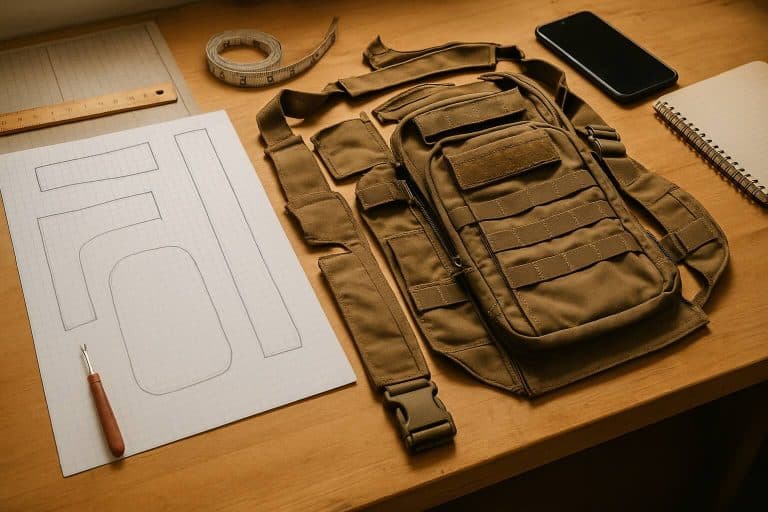Why It’s Okay to Buy Sometimes
Buy or Build? Its a question we have all been faced with. Not every MYOG (Make Your Own Gear) project needs to start from scratch. Whether you’re short on time, just getting started, or don’t yet have the materials or tools for a project, choosing a pre-made solution can be the right move. Buying gear isn’t cheating — it’s strategic. If you’re new to MYOG, check out my Beginner’s Guide to Sewing and MYOG Success for the mindset and basics that make the journey approachable.
Some of my own favorite projects started with a commercial item that I later rebuilt, modified, or reverse engineered. Knowing when to buy and when to build is part of becoming a confident maker.
Signs It Might Be Smarter to Buy
- The project uses materials or tools you don’t have yet (like foam padding, edge binding, or a walking foot machine)
- You’re working under a deadline and need gear that works now
- You’ve never made that type of item before and want to study a commercial version first
- You want to test the use-case before investing the time into making your own version
How to Choose a Pre-Made Item with MYOG in Mind
- Look for simple panel shapes and construction details that would be easy to replicate later
- Choose bags that prioritize function over looks: how does it open, close, carry, and attach?
- Consider material choices: Could you rebuild this in your fabric of choice later?
- Check the seams: Are they easy to deconstruct or study?
What Makes a Bag “MYOG Friendly” Even If You Didn’t Sew It
- Modular layout or external webbing makes it easy to attach to other gear
- The shape fits your activation style or gear kit
- Strong stitching or bar tacks where it counts (so it lasts until you can replace it)
- Good internal organization that gives you ideas for future builds
Bonus: You Can Learn from Commercial Gear
- Take measurements and trace panels before using it
- Study seam types, stitch lengths, zipper placement, and how bulk is managed
- Ask: What works well here? What would I change?
- Save patterns or panel tracings in a binder for future reference. Want to plan your own version? My guide on how to plan and sketch your MYOG projects will help you get started with confidence.
Tips for Selecting a Good Base Bag
When choosing a bag to buy, consider:
- Popularity: More popular models often have videos, reviews, and even teardown guides available online
- Field Usage: Look for gear commonly used in your environment (backpacking, bushcraft, POTA/SOTA, etc.)
- Modularity: MOLLE-compatible or hook-and-loop interiors allow easier customization later
- Proportions: Choose a size that fits your loadout without wasting space
- Accessibility: Can you reach what you need quickly in the field?
Recommended Starter Bags and Pouches
You don’t always have to buy new. Garage sales, thrift stores, and military surplus shops can be goldmines for older pouches and bags — especially if your goal is to take them apart, study them, or reuse materials. These secondhand finds are budget-friendly and often built tough, making them perfect for experimentation.
If you want a strong starting point, here are a few commercial options that have a great reputation, modular layout, and lend themselves well to future MYOG experimentation:
- Helikon-Tex E&E Pouch — a compact, expandable utility pouch with internal organizers
- 5.11 Tactical Pouches — highly modular with consistent build quality
- Condor Backpacks — budget-friendly options often used in radio and survival kits
- Ripstop by the Roll Kits — excellent halfway point between buying and building
Conclusion: Buying Is Part of the MYOG Journey
You don’t have to make everything from scratch to be a successful MYOG creator. Every pre-made item you use is a chance to learn, improve, and plan for future builds. The best makers aren’t purists — they’re problem solvers.
Whether you’re buying a pouch to study or using it as-is until you’re ready to build your own, the mindset of MYOG is always with you.
If you’ve found a great bag or modded a commercial item to suit your needs, tag @printpresssew and use #MYOGJourney. I’d love to see what you make of it. If you’re ready to build after buying, check out 5 easy MYOG projects that are great for skill-building and customizing your kit.







